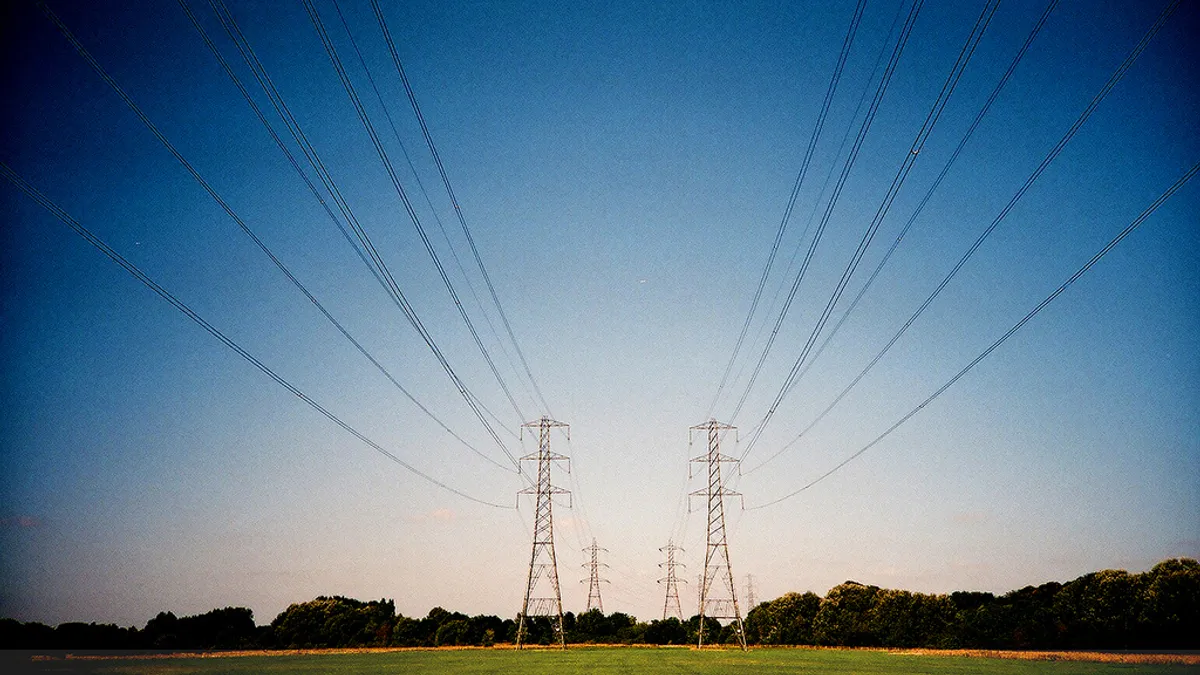Dive Brief:
- California ratepayers could save $1.5 billion annually if the state enters into a full regional transmission organization (RTO) with surrounding states, according to a new report from the energy think tank Next 10.
- Benefits from a Western RTO include job market growth, opportunities to integrate renewables and further pressure to retire coal plants in the region, according to the report, while also leveraging economies of scale to reduce operating costs.
- Opponents worry that expanding the California ISO's jurisdiction could mean a loss of control over the energy California consumes and hamper its ability to meet aggressive climate goals. The state legislature is currently debating a grid regionalization bill that failed last year.
Dive Insight:
California is in the midst of a debate over whether to integrate its grid into a broader network or maintain tighter control over its electricity policy and supply.
California's renewables industry could shed jobs under a broader regionalization of the electric grid, but the move would be a net-plus for employment, the new report concludes.
Next 10 concluded that a Western regional transmission organization (RTO) "could result in some renewable energy construction jobs moving from California to other states, but it would likely create a much larger number of California jobs overall." The group said increasing renewable generation across the region would lower electricity prices, helping to lower costs for businesses and encourage growth.
A portion of the report focuses on whether integrating the California ISO (CAISO) grid with a broader regional could mean a loss of control over the state's energy management, and ultimately slow the reduction of greenhouse gas emissions.
In a statement, Next 10 explained that CAISO is already independent of state control and that all RTOs are subject to regulation by the Federal Energy Regulator Commission.
"RTOs have limited ability to affect state policy decisions, and their actions are subject to FERC oversight," the group said. "FERC, meanwhile, is subject to oversight by the courts."
The report also notes the primary goal of federal law and FERC policy is to facilitate competition. "State policies that don't interfere with competition are unlikely to run afoul of FERC challenges," the report says. "Clean energy policies ... can be crafted to be compatible with federal rules."
"Regionalization raises a lot of issues," said Next 10 founder Noel Perry. "A carefully crafted regional transmission organization could be a game-changer for clean energy in the West. But as always, the devil is in the details.”
Details aside, the report concludes that "despite concerns about the Trump administration's support for propping up the coal industry, coal generation is in decline nationwide ... a Western RTO with truly competitive market rules would likely increase pressure on aging Western coal plants."
The report cautioned, however, that policymakers must "be sure to avoid market rules that allow old coal plants to survive, such as capacity payments."
"It is hard to envision coal succeeding in a truly competitive market, so long as rules do not unfairly favor incumbent or obsolete technologies," the Next 10 report concluded.
Benefits to California ratepayers from a regional power grid market could reach $1 billion to $1.5 billion annually, according to recent studies.
Regionalization could also provide between 9,900 jobs and 19,400 jobs by 2013 throughout the West, reduce California greenhouse gas emissions 8% to 10% and reduce Western region GHG emissions 3% to 4%, according to CAISO analysis.















